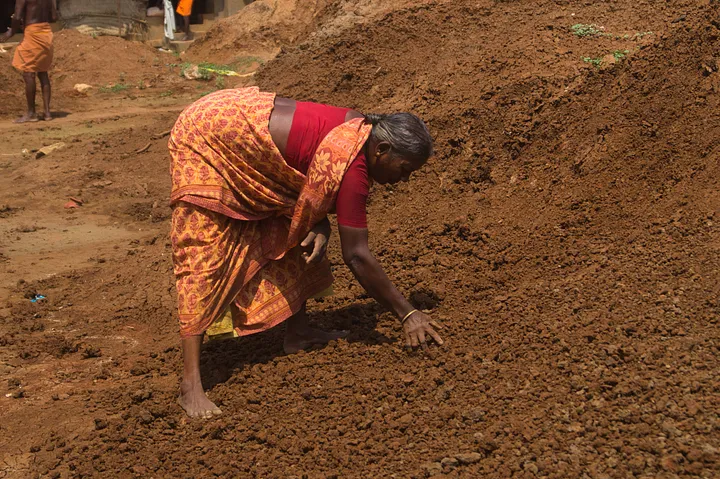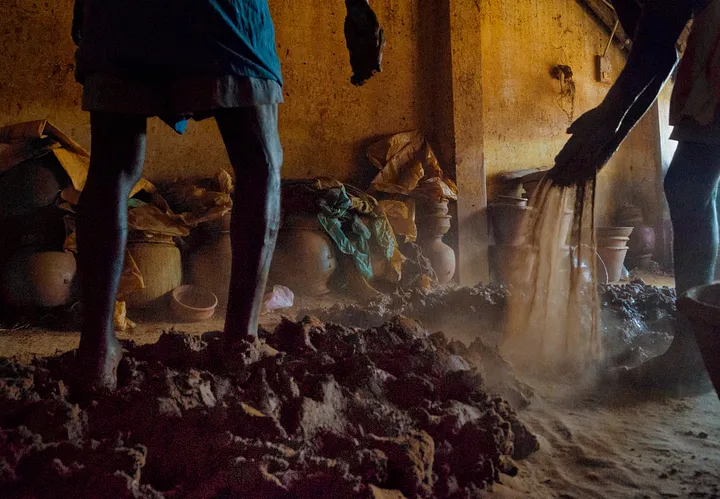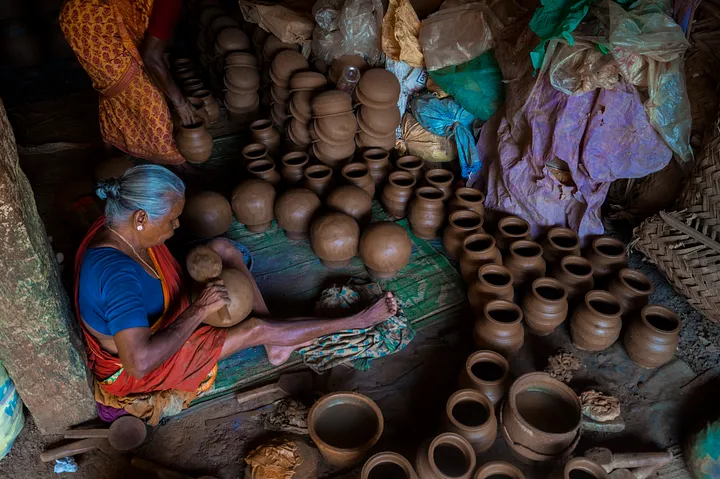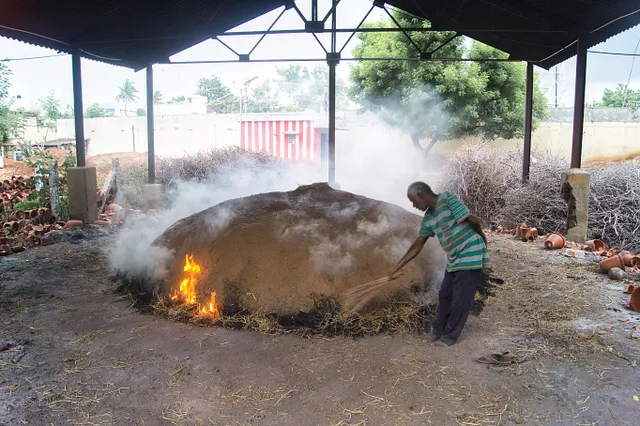I’m sure you’ve watched atleast one satisfying video of a potter throwing clay on the wheel and been really fascinated by it. I visited the cottage industrial society in Manamadurai that produces pottery crafts and learned what goes into making a mud pot. Here goes;

Potter at work
Pottery relies on all four elements of nature. This broadens the horizons of factors that could influence production to the maximum. In Manamadurai, around 120 families work all around the year battling the odds of nature to make money that merely supports subsistence. The monthly income of a member of a potter’s family maxes out at Rs.10,000 a month. So despite the rising demand for mud pottery, the artists don't really prefer for their children to continue with this business. The youngest potter in town was in his 30s.
Mud
Though the ban on the removal of clay from water bodies was lifted, the potters still face problems in terms of sand. They pay a hefty amount to procure a load of it. Different kinds of clay extracted are manually stomped by men for 4 or 5 rounds, adding sand to it as they go through each round. This ensures a favorable texture for molding it into the desired earthenware. Small rocks that escape hand-picking also get discarded.



Throwing

I asked Mr. Ramesh, the potter who makes Ghatam for leading musicians in the country if he would teach me pottery. He replied “Yes. But it would take a lifetime. Pottery isn’t just worked behind a wheel” hinting that all other processes are equally important as throwing. Once a potter throws a clay work, it is dried indoors for as long as 15 days and then dried under the hot sun for a day before loading it into the kiln.

Even slight moisture retained would cause it to crack when flamed in the kiln. So pottery takes a hit every monsoon and the production rates drop as low as 50%.

Shaping

Products like round‑bottom pots would need shaping. The patience this requires is unimaginable; to sit through one whole day and shape hundreds of pots with utmost care. The woman in this picture holds three decades of experience.
Once dried indoors, the clay works are “polished”. Irrelevant to what they call the process as, it is the painting of a special red mud (from Nagercoil) and water mixture over the dried earthenware to give them the red-colored look. They are dried for a few hours under the hot sun and then loaded into the kiln on the same day.



Soolai
Dried clayworks are arranged one over the other on top of firewood during the preparation of Soolai(kiln). They are further covered by haystacks and then a layer of clay is plastered over them. The firewood is lit first through a window at the bottom of the pile. A day of firing in the Soolai turns clay into pottery. Next time you go pottery shopping, remember not to buy shiny ones. An extra process called glazing is followed to get a shiny, attractive finish on the mud products. They are neither healthy nor environment friendly. Buy an unglazed one, like the ones that they make here in Manamadurai.




